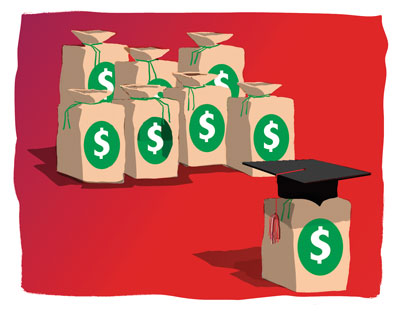 Australian Universities are luring international students to come take courses in Australia. Australian Universities have been and currently are very generous when recruiting international students. One international student who has been given a full scholarship for tuition fees by the University of Western refers to Australian Universities as Santa Clause. “Australian Universities are extremely generous when it comes around to giving away loads of tuition and living money.”Universities that are located in the richer states of Western Australia and Queensland are offering top educated students from around the world different kinds of scholarships and free tuition. For example, the Engingeering School at the University of Queensland has landed around 30 international students by taking care of their tuition fees of $30,000 a year.
Australian Universities are luring international students to come take courses in Australia. Australian Universities have been and currently are very generous when recruiting international students. One international student who has been given a full scholarship for tuition fees by the University of Western refers to Australian Universities as Santa Clause. “Australian Universities are extremely generous when it comes around to giving away loads of tuition and living money.”Universities that are located in the richer states of Western Australia and Queensland are offering top educated students from around the world different kinds of scholarships and free tuition. For example, the Engingeering School at the University of Queensland has landed around 30 international students by taking care of their tuition fees of $30,000 a year.
Tuition Costs And Related Expenses In Australia
If you’re looking to study overseas, there’s a good chance you already know about everything Australia offers. In the event that you’re unaware of these details, they will be listed here. We will also cover basic information, and of course, tuition fees. The first step you need to take -- prior to looking into tuition costs and things of that sort -- is to fill out an application. The application process in Australia is simple. First, decide on a state in which you’d like to study. From there, list the universities you’d like to attend in order of preference. It would be wise to list several options. The deadline for applications is September. If you’re not accepted to one of your most desired choices, it’s always a good idea to have a few backups. Once you have completed the application, send it to the Tertiary Admissions Centre in the state you have chosen.
International students will be evaluated based on their qualifications pertaining to their country of origin as well as Australia’s qualifications. The most important factor is that you can speak and write fluent English. If you’re unable to provide a certificate to prove this, you will be tested. If you do get accepted, one thing you will have to take care of before tuition fees is Health Insurance, known as Health Cover in Australia. You will need to request Overseas Student Health Cover (OSHC) while you’re using a student visa in Australia. Your length of stay must exceed three months and the average cost will be around $350 to $375 per year. This must be paid before you travel to Australia.
As far as the overall cost of studying in Australia, which includes room and board, you should expect to be paying between $100 and $300 per week. Since you will only be allowed to work 20 hours per week with a student visa, a part-time job alone should not be solely relied upon to cover your expenses. In addition to tuition costs, which we will get to soon, you should also expect some random school expenses, such as student organizations, sports facilities, lab costs, books, and excursions. Just to get the visa will cost $450, but this is only a one-time fee. All this said, based on recent studies, it’s much cheaper to study in Australia than most other countries.
If you’re looking to save money, then scholarships are possible for international students. To find out more, you can contact the Australian embassy, the Australian Development Assistance Bureau, or the Department of Education, Science, and Training Affairs. You can also do an online search for Australian organizations offering scholarships to international students.’ Grants aren’t as easy to come by. In most cases, they’re only available for resident students. However, if you wait two years and you’re not studying for a Masters or Doctorate, an Austudy Grant is possible.
Assuming you will not be able to get a scholarship or grant, let’s now go over tuition costs. If you’re looking to take Foundation Courses, expect to pay between $9,000 and $15,000. For an Undergraduate Program -- which is only three years in Australia -- expect to pay $10,000 to $14,500. For any lab-based program, expect to pay $11,000 to $17,000. Graduate Certificate Diplomas will range between $9,000 and $16,000. A Masters Degree will cost between $11,000 and $19,000. An MBA will range from $15,000 to $30,000 in cost and 9 to 16 months in duration. And if you’re in need of English Language Training, that will run between $3,000 and $14,000.
If you take all the numbers above and compare them to studying in the US or UK, even with traveling expenses, a visa, and health coverage, you’re saving a lot of money by studying in Australia. Having international exposure under your belt is also a big boon; it will raise eyebrows with potential employers. The friendliness and scenery are also terrific bonuses. Enjoy your stay.











